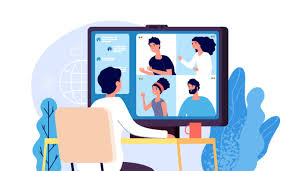
Noam Raiter,1 Ana Hategan2
1Michael G. DeGroote School of Medicine, McMaster University, Ontario, Canada; 2Department of Psychiatry & Behavioural Neurosciences, McMaster University, Ontario, Canada
The number of female medical students in North America has outweighed that of males in recent years, and at a quick glance, it may seem like we have achieved equality in the medical field.1 Females in medicine continue struggling to meet their male colleagues in academic promotion, producing scientific journal articles, and obtaining leadership positions.2,3
The root of this disparity lies in what is known as the “Hidden Curriculum,” a powerful education process that takes place beyond the traditional classroom and yet shapes the field of medicine in its entirety.4 The hidden curriculum ingrains social norms, stereotypes and values from the beginning of medical school, influencing decisions about specialty, family balance, and pursuing leadership positions.5 The medical field may not deny women access to any of these achievements, but the hidden curriculum inherently discourages them.
Medical students need to learn that these stereotypes and social norms are based on nothing more than bias. Thus, we must provide female medical students with strong female role models.
Receiving mentorship from senior professionals allows juniors to form the connections and frameworks needed for ongoing success.2 Mentorship is a critical part of medical education and career progression, but the forms and mechanisms in which it exists vary widely in accessibility and efficacy. Thus, we propose the introduction of consistent female to female mentorship programs in medical schools across Canada.
Three mentorship models have the strongest usage: the dyad model, the multiple-mentor model, and the peer-mentor model. The most traditional of these is the dyad model in which one senior mentors one junior.5 This model is generally successful but not without flaws. Lack of female mentors remains a significant barrier.3 This makes it possible for some female medical students to have successful dyad mentorship, but others to be left without guidance. This imbalance of mentors to mentees is likely due to two main factors. First, the current rise in female matriculants has created more mentees needing mentors. This barrier is likely to adjust over time as we continue to promote new females in medicine to pursue leadership and research careers. Second, the hidden curriculum deters women from obtaining these positions and thus they cannot serve as mentors. Women are found to be clustered within certain specialities with lower remuneration that are known to promote “good work life balance.” Even within specialties, a gender wage gap is consistently demonstrated.6 Another flaw of the dyad model is that sometimes a singular mentor is not able to provide all the necessary expertise and connections needed for a mentee’s specific career goals. For example, if a medical student is interested in exploring both surgery and physician wellness, they may need two separate mentors with expertise in these two areas. Especially due to the limited number of mentors, it is not certain a junior will be able to find a senior mentor with their exact career goals. Due to these reasons, other models have been trialled.3
With the multiple-mentor model, a mentee seeks multiple mentors to address different aspects of their journey.5 This model addresses the issue of needing multiple mentors to cover all future aspirations as discussed in the above example. On the downside, the multiple mentor model does not address the low availability of female mentors and if anything, augments that barrier by requiring multiple mentors per mentee. However, this model in some cases may allow for a lower time commitment for mentorship and allow mentors to take on multiple mentees.
A third model, the peer-mentor model, has also been cited as successful in previous studies.3 This model promotes females of similar rank to work together toward a common goal, meaning that medical students and junior physicians would serve as each other’s mentors and help connect each other with opportunities and education. Such a model specifically tackles the barrier of accessibility and, despite being quite different than traditional ideas of junior-senior mentorship, has been shown to still provide some value to career progression.5 However, it is not able to entirely compensate for the expertise and networking opportunities provided in traditional senior to junior mentorship models such as the dyad and multiple-mentor models.
Clearly, mentorship is important but existing models fall short in meeting the needs of females in medicine. Thus, we propose the implementation of a novel approach, Group-Based Mentorship, which may provide all the important benefits of mentorship while tackling barriers. This model consists of a group of multiple mentors and multiple mentees. This model provides increased accessibility, addresses needs of multi-passionate students, and fosters junior-senior mentorship. Group-based mentorship also contributes unique value in that it can allow for multidirectional streams of information transfer which allows mentors to also learn from their younger mentees. This is important as traditional mentorship models such as the dyad or multi-mentor model intrinsically promote a hierarchical relationship and thus dissuade the mentor from learning from the mentee. In contrast, a group-based program promotes mentorship through a collective of females and will thus help strip away any power dynamics and provides additional benefit to senior professionals by allowing juniors the opportunity to introduce modernized and innovative perspectives of medicine. Recently, numerous journal articles have pointed towards the need of a cultural shift and continued feminist movement within the medical field.7,8 Further, statistics show that despite consistent efforts to revamp wellness of medical students and physicians, burnout rates have not fallen and suicide remains the only cause of death higher in physicians than the general population.9,10 Medical students and young trainees are entering medicine at a time of a paradigm shift and therefore bidirectional discussion and information transfer can help facilitate this much needed change. Additionally, as technology continues to take on a larger role in medicine,11 mentees can aid their mentors in remaining creative and innovative in their practice. All in all, this will ensure the successful progression of medicine in all of its facets.
Thus, we pose the need for female group-based mentorship programs across Canadian medical schools in order to stride towards true gender parity and begin to invoke a critical paradigm shift in medical culture. Group-based mentorship will help ensure that female physicians continue to progress, thrive, and make meaningful contributions to the field of medicine in the coming decades. Future work should aim for the development of specific frameworks to guide the formation of group-based mentorship programs. Such frameworks will aid seamless adoption of such programs in Canadian universities and ensure equal access to all female medical students in Canada.
References
- Association of Faculties of Medicine of Canada (AFMC). TableG-1. In Canadian Medical Education Statistics 2018 (40th vol, pp. 137). (2019). Ottawa, ON: AFMC. https://afmc.ca/sites/default/files/pdf/CMES/CMES2018-Complete_EN.pdf. [Accessed August 2, 2020].
- Hategan A, Bourgeois JA, McConnell, M. Gender gap: A cross sectional study of academic departments. Journal of Psychiatry Reform. 2016;2(2).
- Farkas AH, Bonifacino E, Turner R, Tilstra SA, Corbelli JA. Mentorship of women in academic medicine: a systematic review. Journal of General Internal Medicine. 2019;34(7):1322-1329. https://doi.org/10.1007/s11606-019-04955-2
- Phillips CB. Student portfolios and the hidden curriculum on gender: mapping exclusion. Med Ed. 2009;43(9):847-853. https://doi.org/10.1111/j.1365-2923.2009.03403.x
- Mayer AP, Files JA, Ko MG, Blair JE. Academic Advancement of Women in Medicine: Do Socialized Gender Differences Have a Role in Mentoring? Mayo Clinic Proceedings. 2008;83(2):204-207. https://doi.org/10.4065/83.2.204
- El Jaouhari S. The ongoing need for feminism in medicine. Can Med Ed J. 2020.
https://doi.org/10.36834/cmej.71053 - Hardouin S, Cheng TW, Mitchell EL, et al. RETRACTED: Prevalence of unprofessional social media content among young vascular surgeons. J of Vasc Surg. 2020;72(2):667-671. https://doi.org/10.1016/j.jvs.2019.10.069
- AlShebli B, Makovi K, Rahwan T. RETRACTED ARTICLE: The association between early career informal mentorship in academic collaborations and junior author performance. Nature Communications. 2020;11(1). https://doi.org/10.1038/s41467-020-19723-8
- Vogel L. Even resilient doctors report high levels of burnout, finds CMA survey. CMAJ. 2018;190(43). https://doi.org/10.1503/cmaj.109-5674
- Schernhammer E. Taking their own lives – the high rate of physician suicide. New England Journal of Medicine. 2005;352(24):2473-2476. https://doi.org/10.1056/NEJMp058014
- Mitchell M, Kan L. Digital technology and the future of health systems. Health Systems & Reform. 2019;5(2):113-120. https://doi.org/10.1080/23288604.2019.1583040




